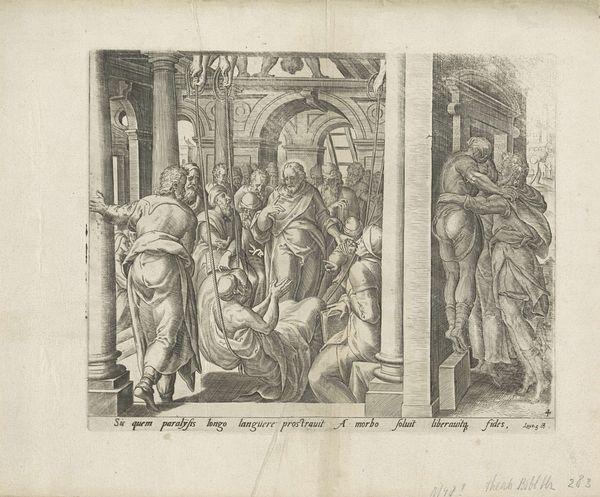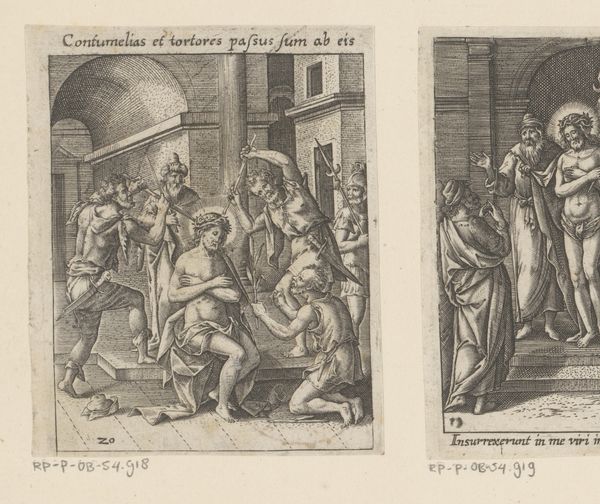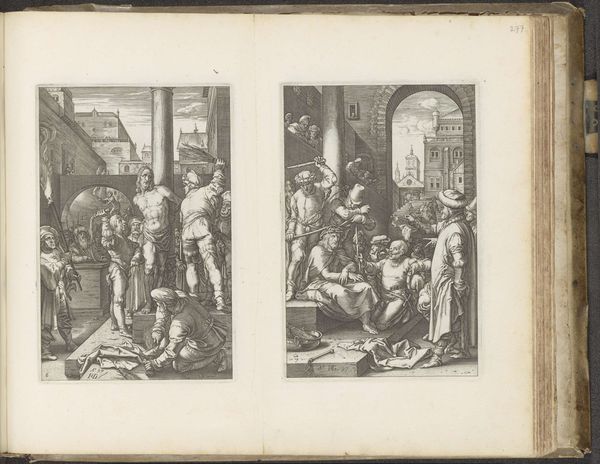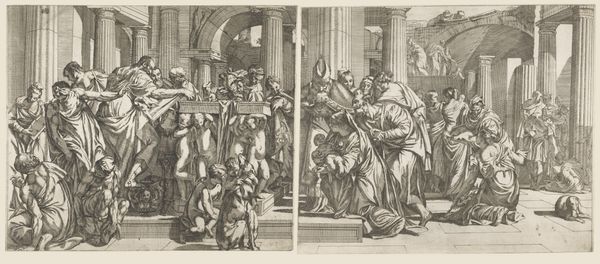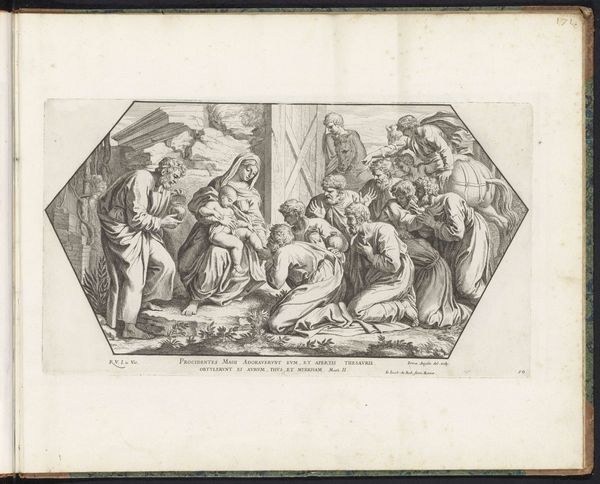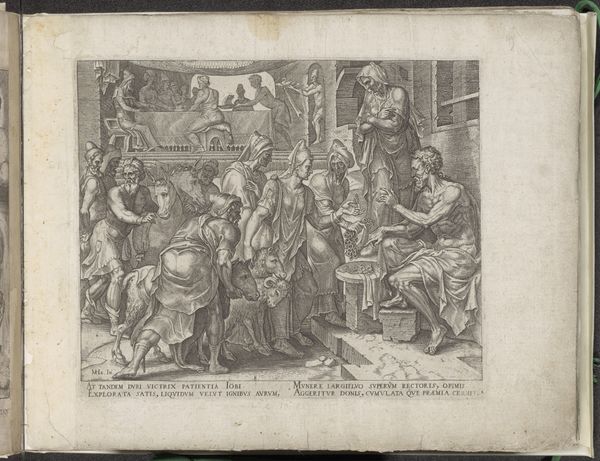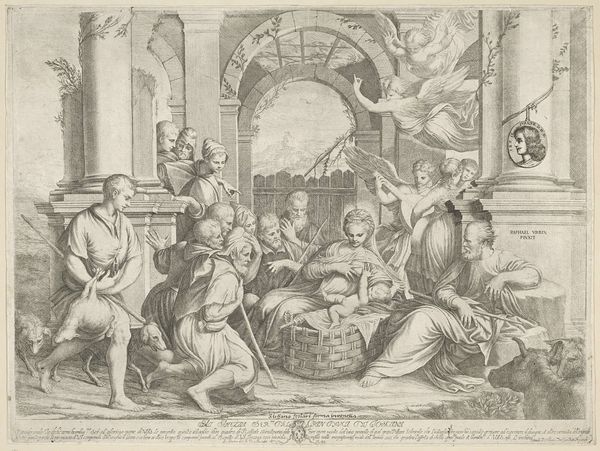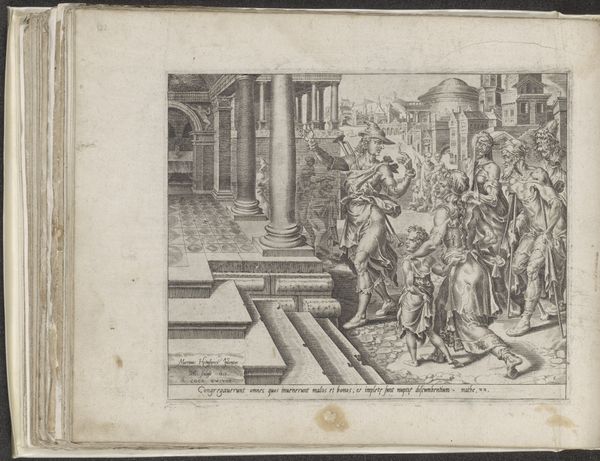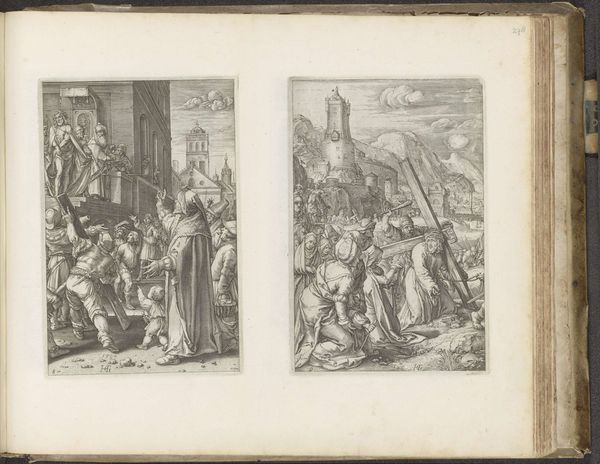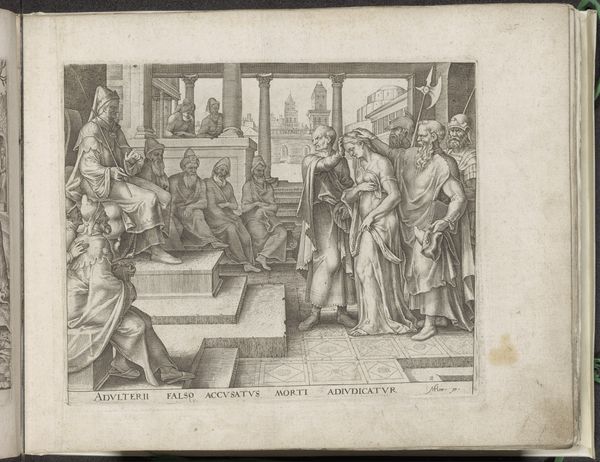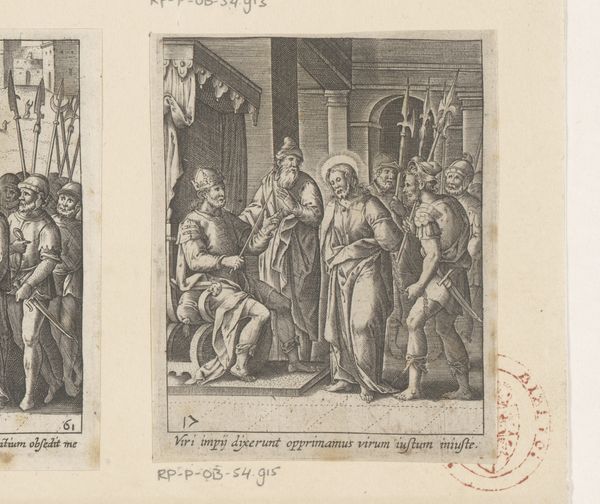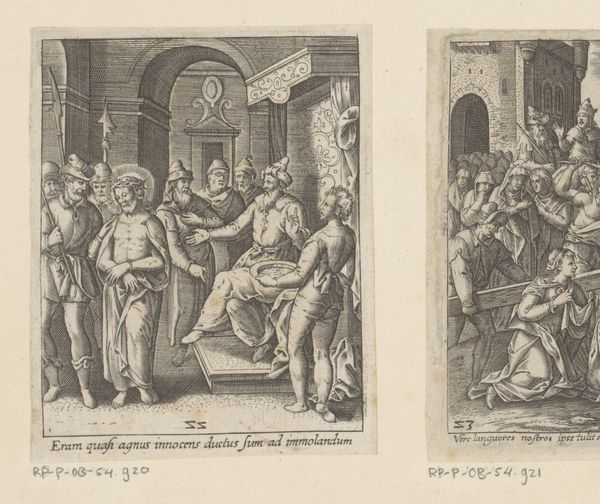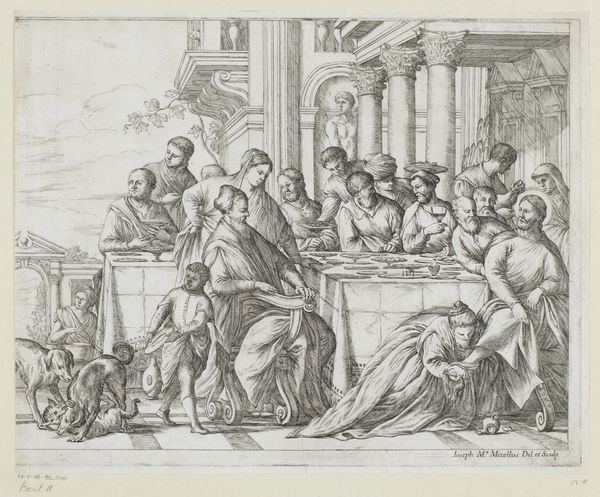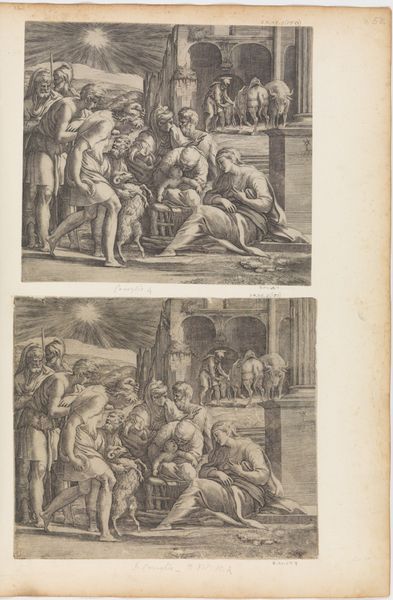
Christus aan de maaltijd in het huis van Simon de Farizeeër 1644 - 1718
0:00
0:00
print, etching, intaglio, engraving
#
narrative-art
#
baroque
# print
#
etching
#
intaglio
#
history-painting
#
engraving
Dimensions: height 332 mm, width 838 mm
Copyright: Rijks Museum: Open Domain
Curator: This etching and engraving by Giuseppe Maria Mitelli, titled "Christ at the Meal in the House of Simon the Pharisee," made sometime between 1644 and 1718, presents a scene teeming with people. Editor: It's incredibly detailed. So many figures are packed into this domestic setting! What do you make of the fact that this biblical scene is portrayed through intaglio printmaking? Curator: As a materialist, I'm interested in how the printing process shapes meaning. This isn’t just a reproduction; the act of engraving transforms the religious narrative. The multiple lines, the labor involved in creating the plate, the potential for mass production--how do these material aspects affect our understanding of Christ's story? Editor: It democratizes it, perhaps? Printmaking made art more accessible. But does that accessibility cheapen the religious significance? Curator: That's a key question! Consider the consumption of prints like these in 17th and 18th century Europe. Were they devotional objects, decorative items, or something else entirely? What’s the market like for religious works on paper? And the different choices of engraving and etching. Editor: Right. How does the choice of medium impact our interpretation? Curator: The meticulous process of engraving, versus the more fluid approach of etching. The burin cutting directly into the metal versus acid eating away the surface. What kind of artisanal choices are visible? Think about the labor—the material effort that went into creating this image, then think about the consumption by various social classes. These processes are telling. Editor: I see. Focusing on the materials and production provides a very grounded, tangible way to approach art history. Thanks! Curator: Indeed. And, ultimately, remember that understanding the materials helps reveal how the artwork functioned within its own specific cultural and economic landscape.
Comments
No comments
Be the first to comment and join the conversation on the ultimate creative platform.
